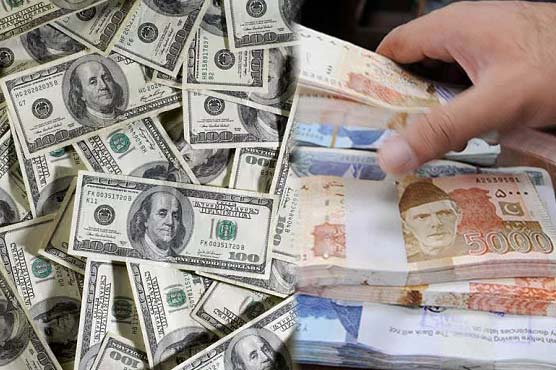LAHORE: The Pakistani rupee saw a decline of 11.51 per cent in its value against the US dollar in the outgoing year i.e. CY2019, as the dollar was seen trading at Rs154.85 against the greenback in the interbank market.
The year saw the rupee free fall against the dollar hitting an all-time low of Rs164 against the greenback in June, down 18.14 per cent against a high of Rs138.22 back in February against previous year’s closing at Rs138.86.
The rupee made a lot of headlines during the year but it saw the sharpest decline in its value in May when it slid a whopping 7.44 per cent in just a span of four trading sessions, from Rs141.39 to Rs151.92, a decline of Rs10.53.
The rupee saw another sharp decline in mid-June by almost 2 per cent, followed by another decline towards the end of June when it fell by another 4.05 per cent to Rs162.16. But shortly a few days later on June 27, 2019, the rupee depreciated 1.16 per cent to record its all-time low at Rs164.05.
The Pakistan Tehreek-e-Insaf (PTI) government had previously been very vocal about the rupee devaluation and had criticized its predecessors for failed policies, however, the past year seems to suggest that they may have changed their opinions.
Special Assistant to Prime Minister Iftikhar Durrani back in May said the interbank dollar rate rose by Rs32, from Rs64 to Rs96 during the government of the Pakistan People’s Party (PPP).
“The dollar climbed steeply during the era of the Pakistan Muslim League-Nawaz (PML-N), as it went up to Rs26 from Rs96 to Rs122,” he said in a statement, adding that the interbank dollar rate further increased by Rs6 during the interim government and reached Rs128 per dollar.
Meanwhile, Asad Umar, while he was still the federal finance minister, in April earlier last year ruled out further devaluation of the rupee, after which the rupee hit an all-time low in June.
Nonetheless, it is pertinent to mention that the Pakistani rupee has started to gain stability since Pakistan entered into the Extended Fund Facility (EFF) offered by the International Monetary Fund (IMF).
Although it was speculated that the rupee might lose further value since the IMF had asked the Pakistani government to adopt a free-float model for the rupee, the rupee saw gains from June 28, onwards. Upon the IMF’s conditions, the State Bank of Pakistan switched from a managed to the flexible exchange rate which has not only helped to restore competitiveness but rebuild official reserves and provide a buffer against external shocks.
Since hitting its all-time high, the rupee has appreciated almost 5.61 per cent against Rs154.85 being traded here on Friday.
Meanwhile, the Real Effective Exchange Rate Index (REER) remained below 100 in CY19. At present, the REER decreased by 5.59 per cent YoY in November 2019 to a provisional value of 95.81 from value of 101.49 back in November 18.
During the year, a low REER of 89.74 was recorded in the month of July 2019 when the IMF approved a 39 month extended arrangement under the EFF.
Former finance minister Asad Umar has been of the view that, traditionally, Pakistan has kept its exchange rate over-valued, incurring losses to the economy and that the rupee should be aligned with its fundamentals and its benchmark should be the real effective exchange rate (REER).
Moreover, entering into the new year, foreign exchange reserves held by the SBP have also swelled up to around $11.5 billion in January 2020, against $7.2 billion in January 2019, an increase of almost 59.4 per cent. This is mainly on the back of the extended fund facility provided by the IMF and some other foreign inflows.
According to a statement issued by the central bank, the foreign currency reserves held by the SBP were recorded at $11,489.4 million as on December 27, up $582 million compared with $10,907.3 million in the previous week.
“This increase is attributed to bilateral and multilateral inflows including $452.4 million received from the IMF under the Extended Fund Facility (EFF),” the statement added.
The overall liquid foreign currency reserves held by the country, including net reserves held by banks other than the SBP, stood at $18,081.4 million. Net reserves held by banks amounted to $6,592 million.





PKR depreciated by 11.5%, which means cost of inputs for Car assemblers increased by around 7-8% (assuming around 75% of cost of manufacturing is linked to USD while 25% is PKR based like salaries expense, repairs, freight, marketing etc).
To cover such ‘massive’ increase in costs, prices of cars were naturally increased by 40-50% by our greedy friends in big 3.